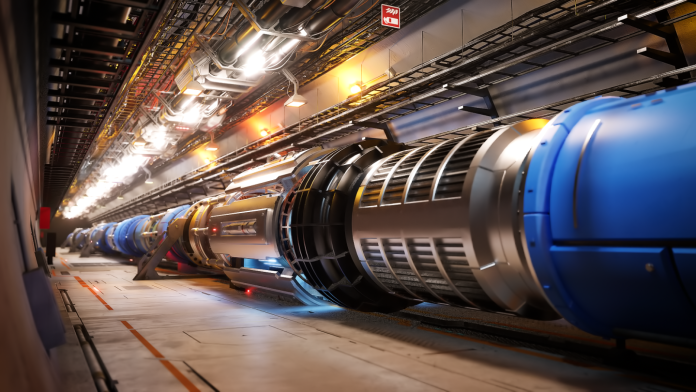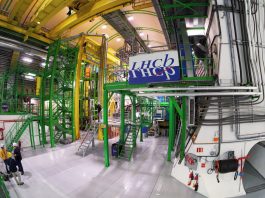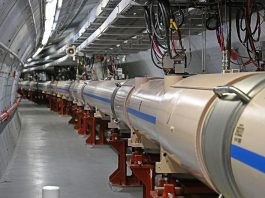CERN, in collaboration with international partners, has completed an extensive feasibility study assessing the potential development of the Future Circular Collider (FCC).
This study, involving over a thousand physicists and engineers worldwide, outlines the technical, financial, and environmental aspects of this ambitious project. If approved, the FCC could become the successor to the Large Hadron Collider (LHC), revolutionising our understanding of fundamental physics by the 2040s.
The scientific vision behind the Future Circular Collider
The FCC is envisioned as a 91-kilometre particle accelerator, significantly surpassing the 27-kilometre LHC.
This next-generation collider is designed to explore mysteries in particle physics, driven by the groundbreaking discovery of the Higgs boson in 2012.
The Higgs boson plays a crucial role in explaining how elementary particles acquire mass, shaping the very structure of the Universe.
However, numerous unanswered questions remain, and the Future Circular Collider aims to delve deeper into these fundamental phenomena.
A two-stage approach to discovery
The proposed Future Circular Collider research programme consists of two phases. The first stage will feature an electron-positron collider, serving as a Higgs, electroweak, and top-quark factory operating at different energy levels.
This will be followed by a proton-proton collider, designed to achieve an unprecedented collision energy of around 100 teraelectronvolts (TeV) – nearly ten times the LHC’s current capability.
These two stages align with the 2020 update of the European Strategy for Particle Physics, which prioritises high-energy physics research for the coming decades.
Engineering and infrastructure challenges
The feasibility study examines several key aspects necessary for the FCC’s development, including geology, civil engineering, and technical infrastructure.
The 90.7-kilometre ring would be constructed at an average depth of 200 meters, requiring significant excavation and surface site development.
Advanced superconducting magnet technology and next-generation detectors are essential for managing the increased energy levels.
The estimated cost for the initial electron-positron stage is 15 billion Swiss francs, with construction expected to span 12 years, beginning in the early 2030s.
Sustainability and public engagement
CERN has pledged to make the Future Circular Collider a model of sustainable research infrastructure, integrating eco-design principles throughout its lifecycle.
Efforts to minimise the environmental impact include energy-efficient operations, territorial synergies such as energy reuse, and sustainable material use in construction and dismantling.
Public engagement is also a priority. CERN is working closely with its host countries, France and Switzerland, along with regional and national authorities, to maintain transparency and encourage public participation.
Dedicated initiatives are being developed to foster constructive dialogue with local communities and stakeholders.
What comes next?
The completion of the feasibility study marks a significant milestone, but no formal commitment has been made to proceed with construction.
The report will undergo independent expert reviews before being presented to the CERN Council in November 2025.
A final decision on whether to move forward with the FCC is expected around 2028, following further assessments and international consultations.
The broader impact of the FCC
Beyond its contributions to physics, the Future Circular Collider is expected to drive technological advancements with broad societal benefits.
Innovations in superconducting materials could enhance medical imaging and fusion energy research, while accelerator and detector technologies could lead to breakthroughs in cancer treatments and industrial applications.
Additionally, advancements in high-efficiency power transmission may contribute to global energy infrastructure improvements.
The future of high-energy physics
The Future Circular Collider represents a bold step in the quest to understand the fundamental forces shaping our Universe.
If approved, it will redefine the boundaries of particle physics, potentially unlocking new dimensions of knowledge.
As the scientific community and policymakers deliberate its feasibility, the world watches with anticipation – ready to witness the next chapter in high-energy physics exploration.





